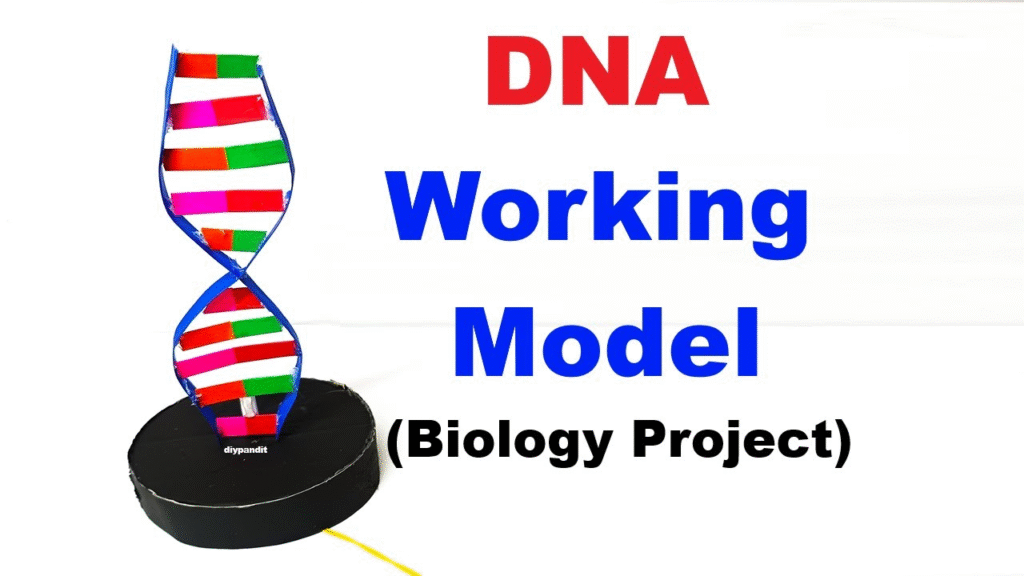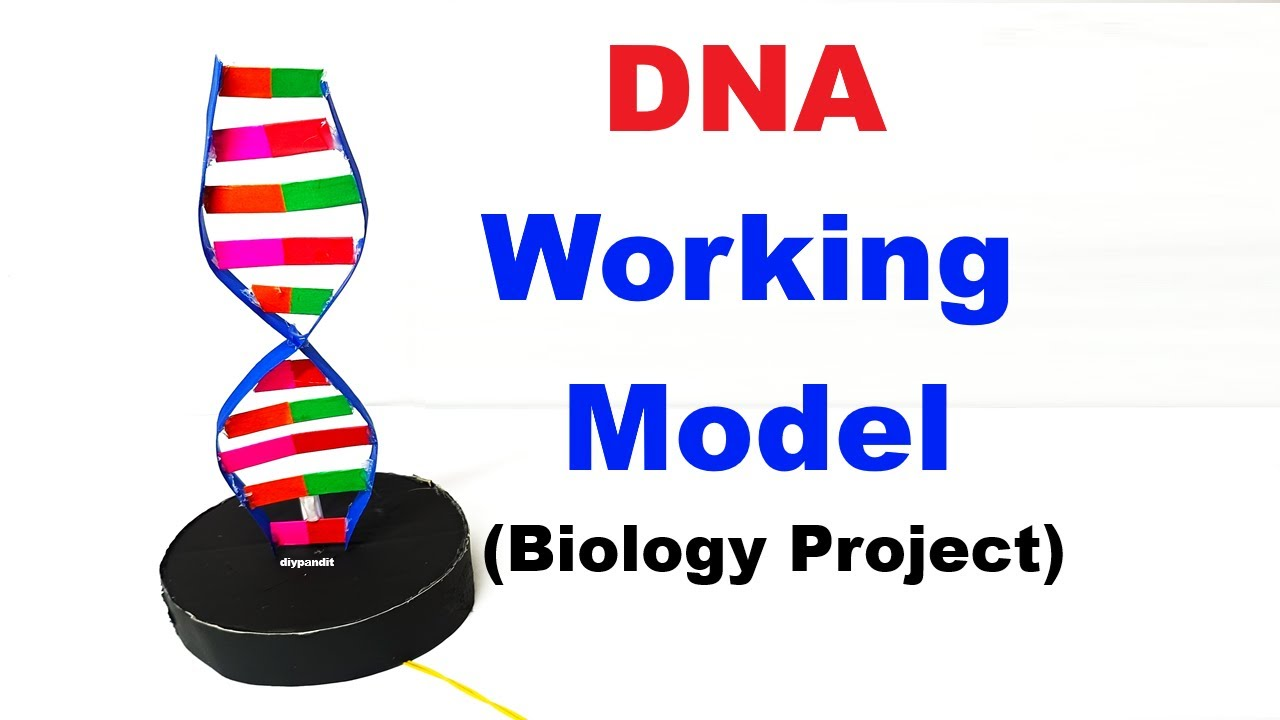Introduction
DNA, or Deoxyribonucleic Acid, is the genetic material that carries instructions for the growth, development, and functioning of all living organisms. Its structure is a double helix – like a twisted ladder – made of sugar-phosphate backbones and base pairs (Adenine-Thymine and Guanine-Cytosine).

To showcase this fascinating structure in a science exhibition, you can build a rotating DNA model using simple materials like color paper, cardboard, and a slow-speed motor.
Materials Required
- Thick cardboard (for base and support)
- Color paper (4 different colors for A, T, G, C bases)
- Ice cream sticks or straws (for rungs of the ladder)
- Thread or pipe cleaners (to join rungs)
- Glue and tape
- Small slow-speed motor (3–9V)
- 9V battery and holder with switch
- Wooden stick / GI wire (as rotating shaft)
- Hot glue gun (for strength)
Video Construction Steps
- Base Preparation
- Take a strong piece of cardboard as the base.
- Fix a vertical support stand (made of cardboard or wood) in the center to hold the rotating DNA structure.
- Double Helix Structure
- Cut two long strips of cardboard or thermocol to act as the vertical sides (sugar-phosphate backbone).
- Use ice cream sticks or straws as the horizontal “rungs” of the ladder.
- Stick colored paper squares (red, blue, green, yellow) at each end of the rungs to represent A-T and G-C base pairs.
- Twisting the Ladder
- Gently twist the ladder-shaped structure to form a double helix spiral.
- Reinforce the joints with glue so that the helix remains firm.
- Motor Attachment
- Attach the slow-speed motor at the base, connected to a shaft or wire rod that goes vertically upward.
- Fix the DNA model onto the shaft so it rotates smoothly.
- Connect the motor to a 9V battery with a switch.
- Finishing Touches
- Decorate the base with labels like “Sugar-Phosphate Backbone”, “Base Pairs”, and “Double Helix”.
- Add arrows showing rotation to highlight movement.
Working Principle
- When the switch is turned on, the motor rotates slowly, making the DNA double helix spin smoothly.
- The rotation demonstrates how the DNA looks in 3D form, making it interactive and visually appealing.
- The colored base pairs help explain pairing rules (A with T, G with C).
Conclusion
This rotating DNA working model is an excellent DIY project for a science exhibition. It is low-cost, easy to build, and explains the complex double helix structure in a simple, visual, and dynamic way. The motorized rotation makes it engaging for viewers, while the color coding of base pairs adds clarity. It is also a strong candidate for Inspire Award projects, since it combines creativity, scientific explanation, and engineering design.

